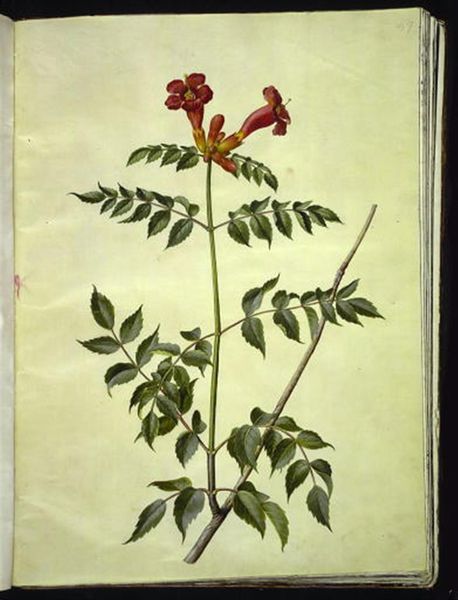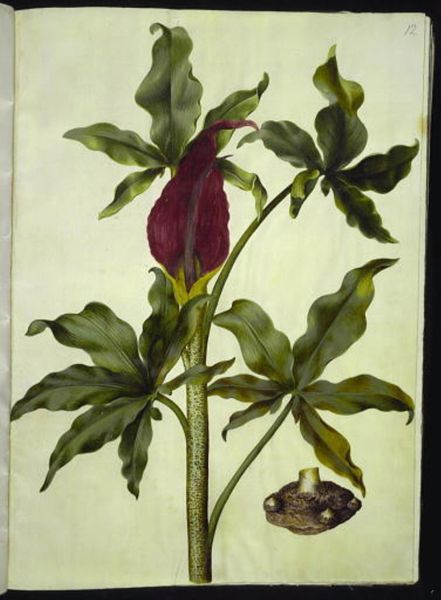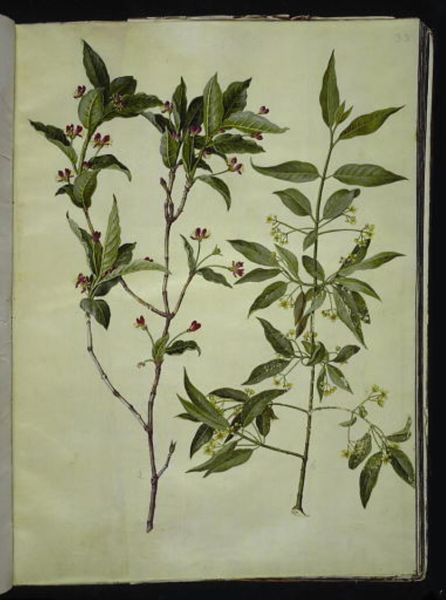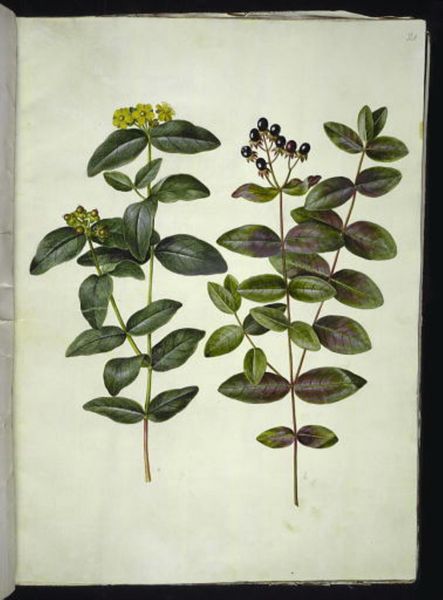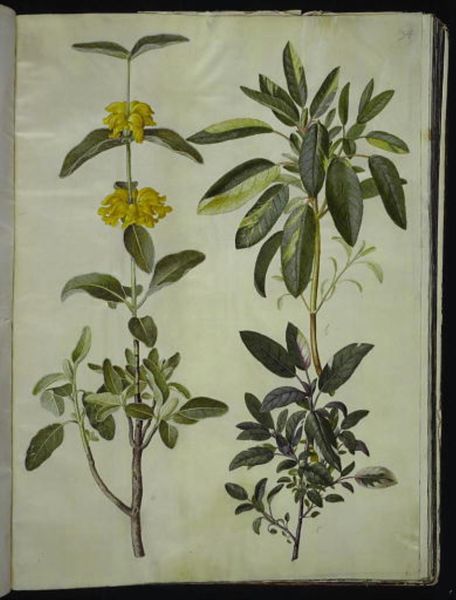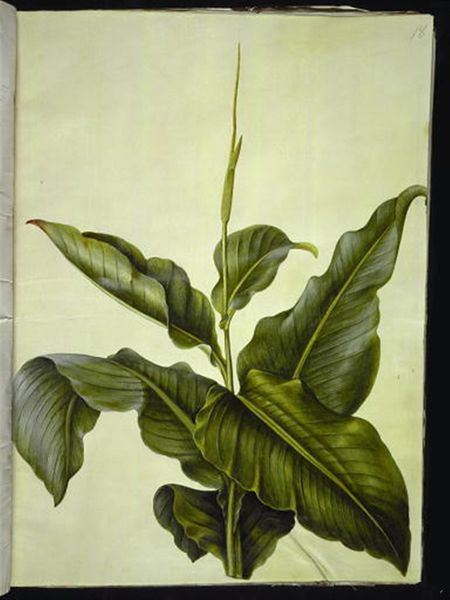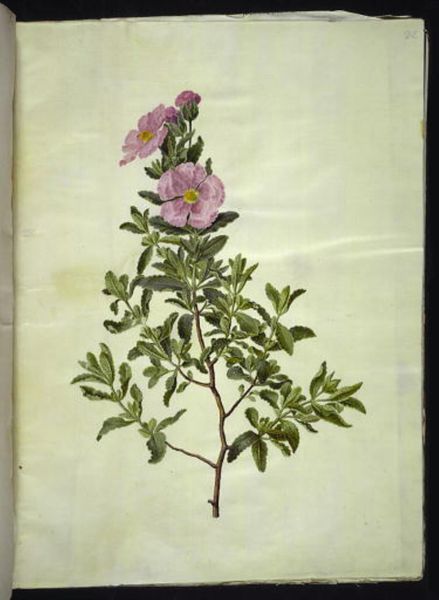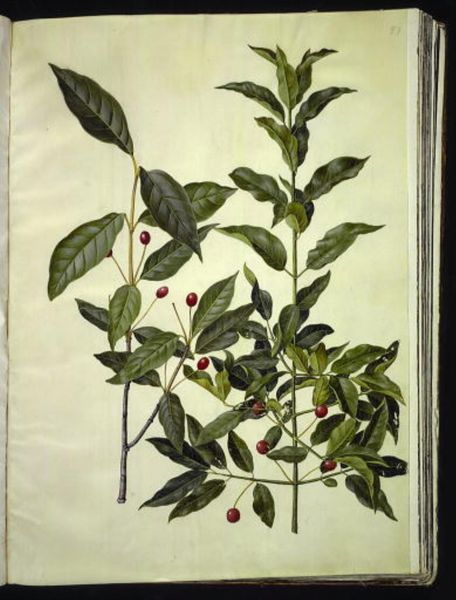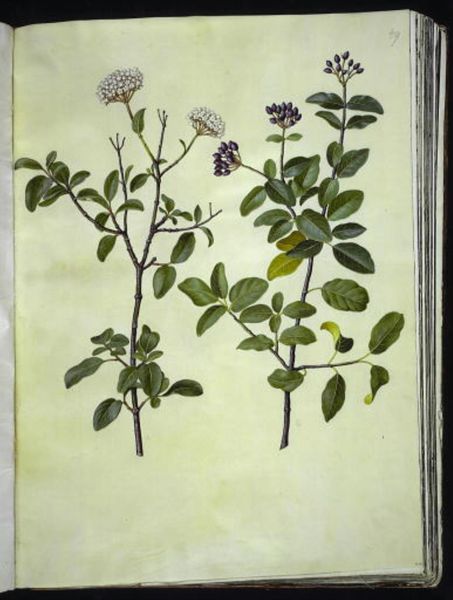
drawing, coloured-pencil, gouache
#
drawing
#
coloured-pencil
#
gouache
#
11_renaissance
#
coloured pencil
#
botanical art
Dimensions: 505 mm (height) x 385 mm (width) (bladmaal)
Curator: This work, entitled "Paeonia mascula (rosen-silkeplante)", by Hans Simon Holtzbecker, created sometime between 1649 and 1659, offers us a precise botanical study. It’s rendered meticulously in drawing, coloured pencil, and gouache. Editor: The first thing that strikes me is how intensely lifelike it feels. It's more than just a representation; it's imbued with a certain vitality. You can almost feel the texture of the leaves and see the faint bloom on the berries. Curator: Holtzbecker's mastery resides in his capacity to elicit this very tangibility, focusing on shape, line, and the subtleties of light. Observe how each leaf, though similar in form, possesses unique characteristics—minute tears, varying hues, precise contours. Editor: Absolutely. Considering the time period, the creation of pigments themselves becomes important. How would he have sourced these subtle shades of green and red? Were they plant-based, mineral? And what was the societal role of such botanical documentation—scientific pursuit or artistic patronage? Curator: Excellent points! Such patronage, certainly, aligns with an aesthetic appreciation. Observe the composition itself; the delicate asymmetry, the way the stem provides a structural verticality that supports the dramatic crown of berries. This is more than simple replication; it’s visual rhetoric. Editor: Agreed. And one also has to consider the hand involved, the apprenticeship Holtzbecker likely underwent. The patience, the repetition inherent in such detailed rendering; all that informs our understanding of labor and skill of Renaissance craft. Curator: Precisely! And even the very substrate, the paper – its materiality adds another layer, mediating Holtzbecker’s vision. He understood the interaction, the interplay between material and meaning. Editor: Looking at the subtle coloring, I now imagine him meticulously grinding and mixing his paints. A time-consuming but critical process to his technique. You are left thinking about time and skill invested in representing the single flowering stem before us. Curator: Holtzbecker invites us to appreciate not only the final form, but also the profound intellectual engagement inherent in meticulous observation. Editor: For me, I find a deep appreciation of what we often overlook: the craft, the dedication, the materiality inherent to botanical drawing.
Comments
No comments
Be the first to comment and join the conversation on the ultimate creative platform.
